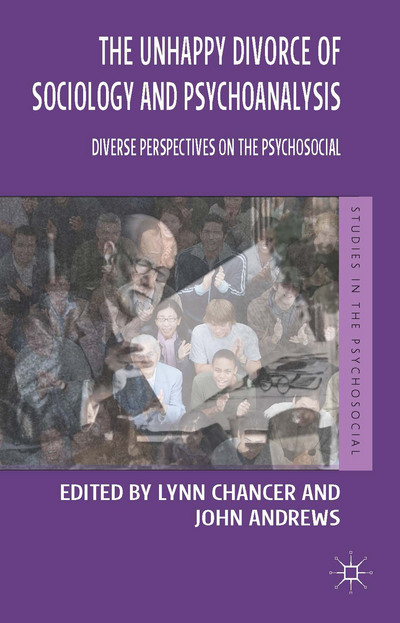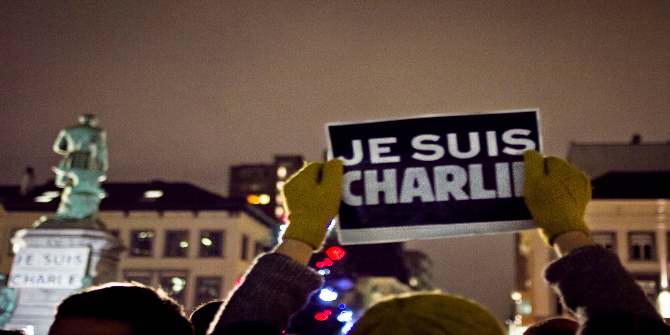Why have sociologists tended to overlook the work of their colleagues in the field of psychology? This collection aims to consider the history of the relationship, ongoing debates and the need for psychosocial analyses when studying social movements, for example. The volume does deliver what it promises – diverse perspectives on the psycho-social, and this is its biggest merit, writes Dariusz Gafijczuk.

On his first and only visit to the United States in 1909, Sigmund Freud is reported to have famously remarked to his protégé Carl Jung: “they [the Americans] do not know that I am bringing them the plague”. As history was to show, these words, like much about psychoanalysis in popular imagination, turned out to be closer to an unfulfilled wish than reality. The visit brought no plague but it did reinforce Freud’s assessment of American life as the apex of ‘civilization and its discontents’, prompting him to conclude at the end of his three week sojourn that American culture as such was “a mistake; a gigantic mistake, it is true, but nonetheless a mistake”. These views were never to change.
The entire premise of The Unhappy Divorce of Sociology and Psychoanalysis: Diverse Perspectives on the Psychosocial is underpinned by an unfulfilled desire of sorts; a desire for a paradigm shifting impact of psychoanalysis in sociology generally, although more immediately the authors throw the gauntlet in the face of American sociology, in particular its post 1945 rendition. Sociology is interrogated, made to account for a missed opportunity to take psychoanalysis seriously. Worse yet, according to the essay that Catherine B. Silver contributes, such resistance to the message is an expression of ‘paranoid anxiety’ by scholars representative of the field.
All this hints “at an underlying puritanical streak in sociological thinking and a paranoid fear of psychoanalysis’s power to unleash sexual and aggressive desires that could threaten the normative social order” (p.66). Perhaps. Personally, I don’t find such argumentation convincing, or more importantly, intellectually productive. But this is also the book’s ‘we would like to have brought them the plague’ moment that is felt throughout the text, while lamenting a divorce between psychoanalysis and sociology – a ‘divorce’ that never really took place.
Logically speaking there should have been a marriage first for a divorce to follow. There never was one. This is despite the fact that such giants of American sociology as Talcott Parsons, or more recently leading figures in the field such as Neil Smelser, who contributes a pleasant autobiographical rumination on his intellectual journey to the book, at one point in time took the promise of psychoanalysis seriously, including intense training in psychoanalytic practice. This seems not to be the case anymore, at least in Smelser’s assessment, who “regards any attempts at forging articulations between the sociological and the psychoanalytic enterprises to be necessarily piecemeal, given the general difficulties”, concluding that “such piecemeal attempts appear to be analogous to attacking a granite rock with one’s bare hands” (p.119). The opening contribution by George Cavalletto and Catherine Silver, thanks to its meticulous analysis of content and frequency of the engagement with psychoanalysis in two flagship publications, the American Journal of Sociology and the American Sociological Review, confirms that much; between 1948 and 1960 there were only thirty-four articles with psychoanalytic focus between the two publications. This is more like a ‘weak interaction’ rather than any sustained, dynamic relationship. This begs the psychoanalytically tinged question: what does the book want?
The volume sets out to counteract the “foolhardy marginalization” (p.1) of psychoanalytic approaches from sociological thinking. By doing so, the text aims to provide a corrective lens to American sociology which has been dominated by a specific and now hegemonic brand of research since the 1950s – the survey-driven, voiceless data sets of aggregate statistics that C. Wright Mills already in the Sociological Imagination described appropriately as ‘abstracted empiricism’. Any attempt to re-invigorate and counteract the mono-dimensional comfort of methodological self-assurance is laudable as it is necessary. But the question that is not adequately considered in the general conceptualization of the volume is how the psychoanalytic paradigm can accomplish this. An ad hoc reinjection of its tenets, including such concepts as the unconscious, anxiety and defense mechanisms, even in “collective and individual” (p.1) guise, is not up to the task, at best inspiring in the reader a sense of intellectual nostalgia ‘in search of lost time’ when psychoanalysis and sociology were still willing to at least consider a ‘blind date’, intellectually speaking. And the last section of the book, ‘The Psychosocial (Analytic) in Research and Practice’, does not do much to dispel that feeling, reading more like a ‘free association’ of streaming reflections, than a focused effort to find a new partnership between psychoanalysis and sociology.
The volume does deliver what it promises – diverse perspectives on the psycho-social, and this is its biggest merit. As is indeed the fact that it triggers an awareness raising process, and this is also why it should not be ignored. But the promise of psychoanalysis has to be reconstructed anew, dispensing with old, worn out content like the unconscious (over the years Freud himself distanced his paradigm from it, describing his practice as ego-psychology, based on the body) and channeling it through new configurations and realities of social life today. One does not need to be overly inventive here. The highest value of psychoanalysis is found in the fact that it extended the range of what can and should be considered as empirical, starting in 1900 with the Interpretation of Dreams. There are glimpses of this kind of engagement in the book, for instance in the third chapter by DeGloma who discusses how social movements such as Gay Pride, changed the “ideas about the unconscious” (p.91). This is the avenue that should be pursued, not a lament about culture’s and academia’s resistance to the psychoanalytic message – the same battle that Freud fought, with limited success, in the first decades of the twentieth century.
Dariusz Gafijczuk is Lecturer in Sociology in the School of Geography, Politics and sociology at Newcastle University. He is author of Identity, Aesthetics and Sound in the Fin-de-siècle: Re-designing Perception (Routledge, 2013) and co-editor (with D. Sayer) of The Inhabited Ruins of Central Europe: Re-imagining Space, History, and Memory (Palgrave Macmillan, 2013).






